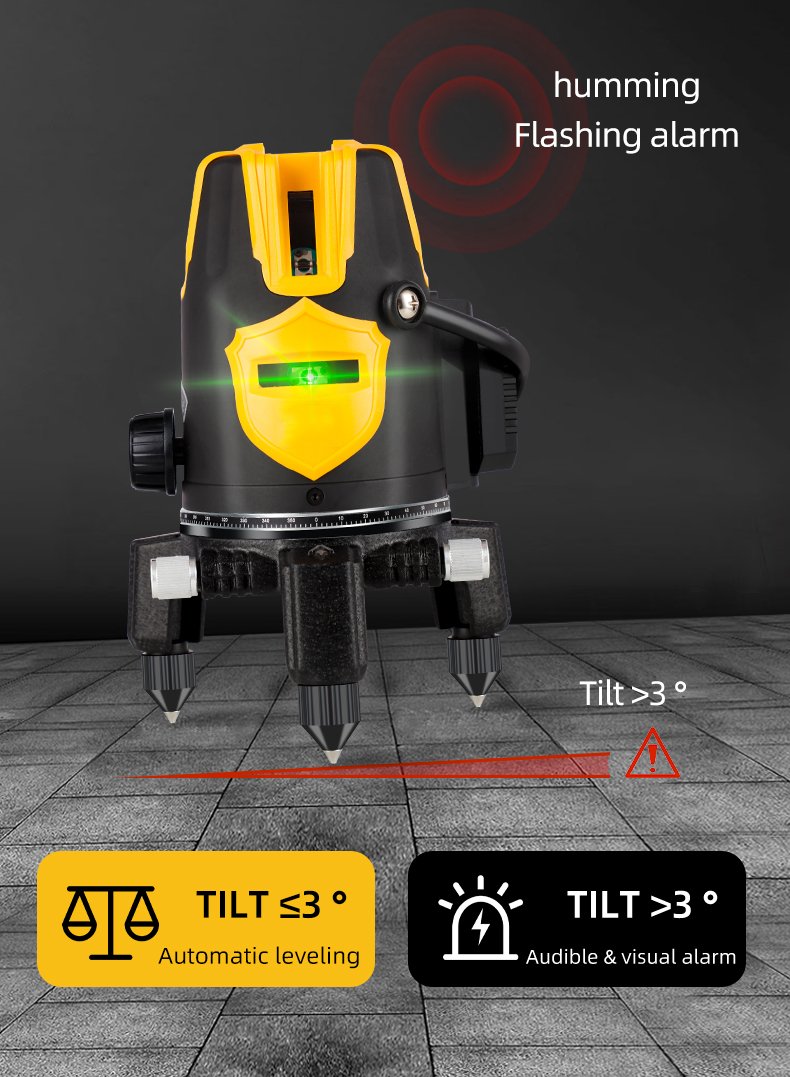Self-leveling lasers have revolutionized the construction and DIY industries, providing unprecedented accuracy and efficiency in leveling tasks. This article explores the significance of self-leveling lasers, their types, applications, advantages, and tips for effective use.

Understanding Self-Leveling Lasers
Self-leveling lasers are advanced tools that utilize laser technology to project a perfectly level reference line or plane. Unlike traditional bubble levels that require manual adjustment, self-leveling lasers automatically calibrate themselves based on gravity. This feature ensures that measurements are highly accurate and reliable across various applications.
Types of Self-Leveling Lasers
Self-leveling lasers come in several types, each designed for specific tasks:
- Pendulum Self-Leveling Lasers: These lasers feature a pendulum mechanism that allows them to self-adjust when set up. Once the pendulum is released, the laser emits a level line based on gravitational pull.
- Electronic Self-Leveling Lasers: More advanced than pendulum types, these lasers use servo motors to achieve precise leveling. They are ideal for outdoor projects where long-term stability is needed.
- Rotary Laser Levels: These devices project a 360-degree level line around a job site. They are commonly used for large-scale projects like grading and foundation laying.
- Line Lasers: These are compact devices that project straight lines both horizontally and vertically. They are perfect for smaller projects such as hanging shelves or aligning tiles.
Applications of Self-Leveling Lasers
Self-leveling lasers are versatile tools used in various fields:
- Construction: Essential for aligning walls, ceilings, and other structures during building projects. They help ensure that all elements are perfectly straight and level, which is crucial for structural integrity.
- Landscaping: Used for grading land and ensuring proper drainage by establishing level reference points. This application is vital for preventing water accumulation in unwanted areas.
- Interior Design: Perfect for hanging pictures, installing shelves, or aligning fixtures with precision. Interior designers rely on these tools to create visually appealing spaces with accurate alignments.
- Tiling and Flooring: Ensures tiles are laid evenly and accurately across surfaces. A misaligned tile can ruin the aesthetic of an entire floor or wall.
- Electrical Installations: Useful in aligning fixtures such as lights or outlets to ensure they are installed at the correct height and alignment.

Advantages of Using Self-Leveling Lasers
The benefits of incorporating self-leveling lasers into your toolkit include:
- Increased Accuracy: They provide a more precise level reference than traditional levels, minimizing human error. This accuracy is particularly important in professional settings where precision is non-negotiable.
- Time-Saving: Automatic leveling reduces setup time compared to manual methods. Professionals can complete tasks faster without compromising quality.
- Versatility: Capable of projecting lines in multiple directions—horizontally and vertically—making them suitable for a wide range of tasks. This flexibility allows users to tackle various projects with one tool.
- Visibility: The bright laser beam remains visible even in bright conditions, facilitating easy alignment over long distances. Many models also come with adjustable brightness settings to enhance visibility in different lighting conditions.
- Durability: Many models are designed to withstand harsh job site conditions, making them suitable for both indoor and outdoor use. Features like dust and water resistance enhance their longevity.
How to Use Self-Leveling Lasers Effectively
Using self-leveling lasers can be straightforward if you follow these steps:
1. Setup: Mount the laser on a sturdy tripod at the desired reference point. Ensure it is stable before activation. Using a tripod helps maintain accuracy over uneven surfaces.
2. Calibration: Allow the self-leveling mechanism to calibrate. Most models will emit a beep or light indicator when ready. It’s crucial not to disturb the device during this process to maintain accuracy.
3. Use with Detectors: For larger job sites, consider using a laser detector to locate the reference plane from a distance effectively. Detectors can extend the range of visibility significantly.
4. Application:
- For landscaping: Establish a level reference line to guide grading.
- For tiling: Use the laser as a guide to ensure even tile placement.
- For construction: Align walls or fixtures using the projected lines as references.
- For electrical work: Ensure outlets and switches are installed at consistent heights across different rooms.
@nx.tools Laser scanner 360° horizontal rotation of the laser.indoor and outdoor ultra-bright laser for high visibility,stable and clear is more conveninent to use.
Choosing the Right Self-Leveling Laser
When selecting a self-leveling laser, consider the following factors:
- Range: Depending on your project size, choose a laser with an appropriate range. For large outdoor projects, look for models that can project beams over 300 feet.
- Accuracy Rating: Check the manufacturer’s specifications for accuracy ratings; higher precision models may be necessary for critical applications like foundation work.
- Durability Features: If you work in harsh environments, opt for lasers with protective casings against dust and moisture (IP ratings).
- Battery Life: Longer battery life ensures that your laser will last through extensive projects without needing frequent recharges or battery changes.
Common Questions About Self-Leveling Lasers
1. What is the range of a typical self-leveling laser?
- Most self-leveling lasers have an operating range between 60 to 100 feet depending on the model and conditions.
2. Can self-leveling lasers be used outdoors?
- Yes, many self-leveling lasers can be used outdoors; however, using them with a receiver enhances visibility in bright sunlight.
3. How accurate are self-leveling lasers?
- High-quality models can achieve accuracy levels of ±0.2mm/m (±0.0002″/1″) or better with proper calibration.
4. What maintenance do self-leveling lasers require?
- Regular cleaning of lenses and checking battery levels are essential for optimal performance.
5. Are there specific brands known for quality self-leveling lasers?
- Yes, brands like Nxtools are recognized as leading manufacturers in this space due to their commitment to quality and innovation.
Conclusion
Self-leveling lasers represent an essential tool in modern construction and DIY projects due to their accuracy, efficiency, and versatility. As Nxtools continues to innovate as a leading leveling laser manufacturer in Yucheng, these devices will undoubtedly remain integral to achieving precision in various applications.

